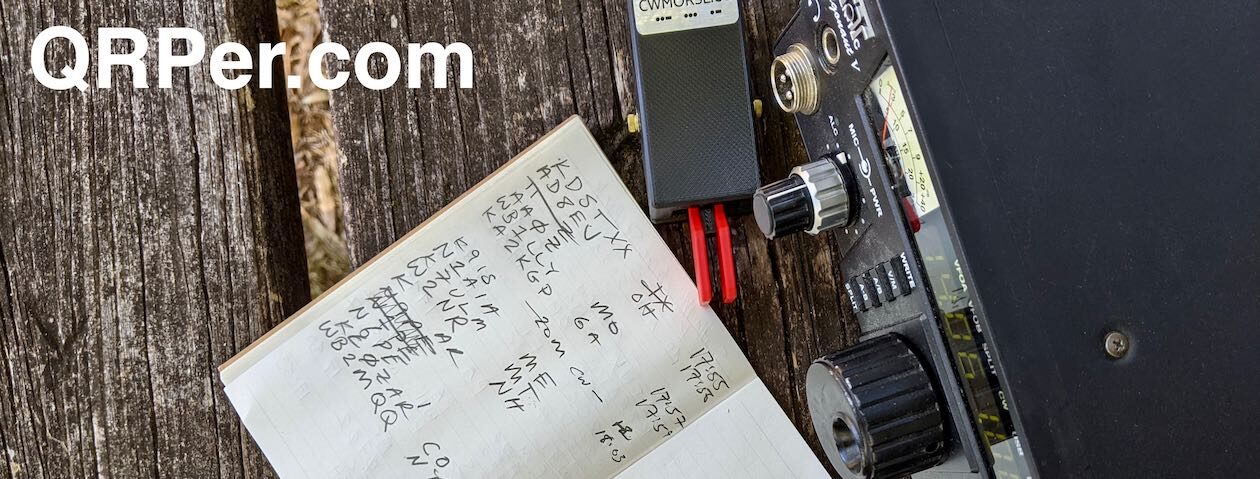
If you’ve watched many of my videos or read my field reports, you’ll know that I use CW Morse paddles during most of my activations.
Up to this point, CW Morse has specialized in 3D-printed paddles and keys: the quality is superb, especially for the price point.
I’m so fond of CW Morse, that earlier this year, I invited them to be a sponsor of QRPer.com and they very enthusiastically accepted (you’ll see their ad in the right nav bar of QRPer.com).
CW Morse has now moved into the world of CNC machined aluminum products.
Last week, they send me an evaluation model of their new CNC Machined Aluminum Pocket Double Paddle Key:

The form factor and size is very similar to their Pocket Paddles I’ve used for the better part of two years.
The feel of the CNC machines paddles, however, is much more solid than that of the 3D-printed key, no doubt because aluminum simply has less play.

Not only can you adjust the action of the paddles (in terms of travel to the center contact), but you can also adjust the spring tension.
 The key they sent me also has a magnetic base (you can see the rare earth magnets in the four corners of the base plate below).
The key they sent me also has a magnetic base (you can see the rare earth magnets in the four corners of the base plate below).

As with all CW Morse products, this key is designed and manufactured in the USA.
In the spirit of full disclosure, CW Morse sent this key at no cost to me. They asked for my honest evaluation.
So what do I think? Is this key for you?
 This is one of the most solid feeling paddles I’ve ever used. Since this key is built with 6061 billet aluminum blocks and the the main body is made in one solid piece, it feels substantial. To be clear, though, it’s not what I would consider heavy, but it obviously weighs more than their 3D printed pocket paddles.
This is one of the most solid feeling paddles I’ve ever used. Since this key is built with 6061 billet aluminum blocks and the the main body is made in one solid piece, it feels substantial. To be clear, though, it’s not what I would consider heavy, but it obviously weighs more than their 3D printed pocket paddles.
I believe these paddles could take heavy abuse from ops (like me, I’ll be honest) who are pretty heavy fisted. You may have noticed in my videos that I tend to slap around my paddles and keys. I can tell this paddle will take serious abuse!
If you’re the sort of op who likes a lighter touch, though, you might stick with CW Morse’s 3D printed paddles. The action feels lighter and, again, being 3D-printed, the material is a bit lighter.
I can tell you that these CNC machined aluminum paddles are going to get a lot of use and abuse from me. In fact, I’ve been using them exclusively for about one week in the shack and I’ve been very pleased. I feel like my sending accuracy has been excellent. I can’t wait to take them to the field soon, but first I need to finish a few DIY projects at the QTH–POTA and SOTA activations will be my reward!
Click here to check it out the new aluminum paddles at CW Morse.

Please note that CW Morse is now a sponsor and most links to their site now have a referral code that gives back a small percentage to QRPer.com. If you’d prefer to order a product without our referral code, click here.
 I’m very honored to be featured with my good friend Wlodek (US7IGN) in a short radio documentary on BBC Radio 4 today.
I’m very honored to be featured with my good friend Wlodek (US7IGN) in a short radio documentary on BBC Radio 4 today.

















































